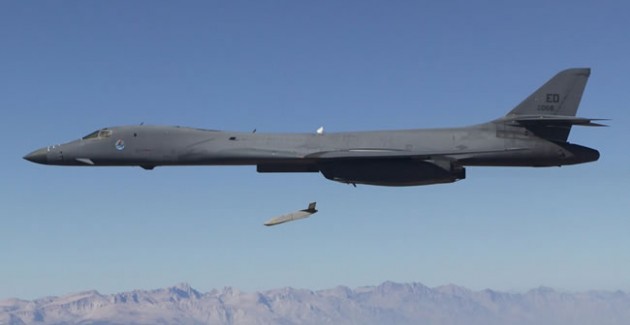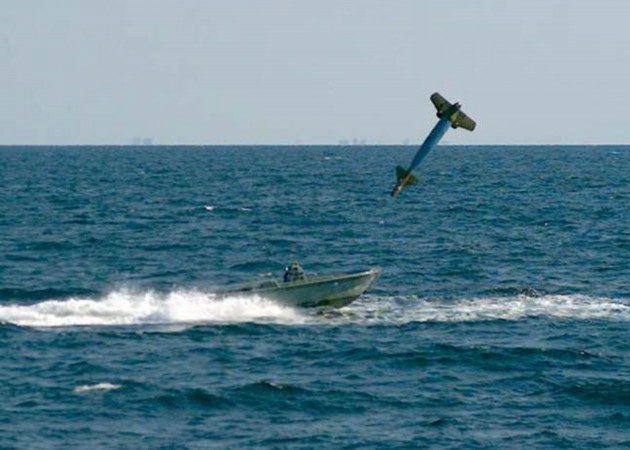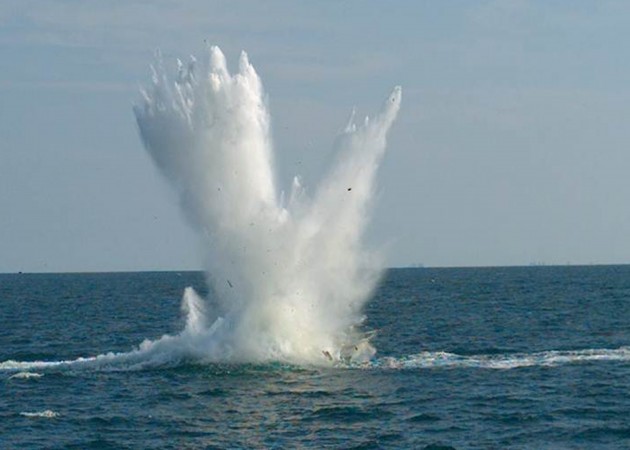B-1B Exterminates Small Moving Boat; Tests Larger Anti-Ship Missile
Posted on
It’s difficult enough for one ship to find and sink another ship. It may not be quite as hard for planes flying from an aircraft carrier to find enemy ships and sink them, but it’s not easy. The hardest task for a plane — especially a land-based plane — may be to find a small boat and sink it while it’s moving.
But that’s just what one of America’s B-1B bombers accomplished earlier this month.
“Future wars might not all be on land, some may include surface combat, so we are evaluating the way we employ the B-1 to aid in completing the mission,” Lt. Col. Alejandro Gomez, 337th TES special projects officer said in an official Air Force news story about the test.
Flying over the Gulf of Mexico with a host of fighters and bombers, the B-1B dropped six munitions: a laser-guided 500-pound bomb (a GBU-54), as well as several 500- and 2,000-pound Joint Direct Attack Munitions (JDAMs), and at least one GBU-10 Paveway II.
That Paveway accomplished what may be the most remarkable part of the test: striking and completely destroying a fast-moving small boat.
Why is the Air Force experimenting with the B-1B, capable of flying between continents at high speed and low altitude? The most likely answer is anti-access/area denial (A2/AD) warfare, embedded most solidly in what the Pentagon calls Air-Sea Battle. The B-1B is not truly stealthy, but it does have a relatively smaller radar cross section, great range and the ability to loft the larger weapons payload in the Air Force, making it useful for A2/AD conditions. (We’re also in the early stages of building the successor, called the Long Range Strike Bomber — to the venerable B-52 and the B-1 and its cousin, the truly stealthy B-2.)
Add to that mix something the Chinese have been working on, a hypersonic anti-ship missile called the DF-21. Designed primarily as an aircraft carrier killer, the DF-21 has prompted the United States to work harder on its own ability to strike war ships at sea. (The photo at the top shows Lockheed Martin’s new LRASM anti-ship missile being tested from the B-1B)
An official with the Pentagon’s AirSea Battle office told my colleague Sydney Freedberg earlier this week that: “We feel comfortable with our ability to address the current threat, [but] adversaries are creating weapons systems of increasing range and precision.” The AirSea Battle concept doesn’t depend on any one wonder weapon, he emphasized, but alongside tools like secure network datalinks, cyber/electronic warfare capabilities, a new stealth bomber, and a host of innovative tactics, “we do need a long-range anti-ship munition, and it needs to be a joint munition, in our opinion.”
The B-1B test may well add another arrow to that quiver. Given the relatively small size of the fleet, of course, it will not offer the Clausewitzian strategic advantage of numbers. But still.
Subscribe to our newsletter
Promotions, new products and sales. Directly to your inbox.



